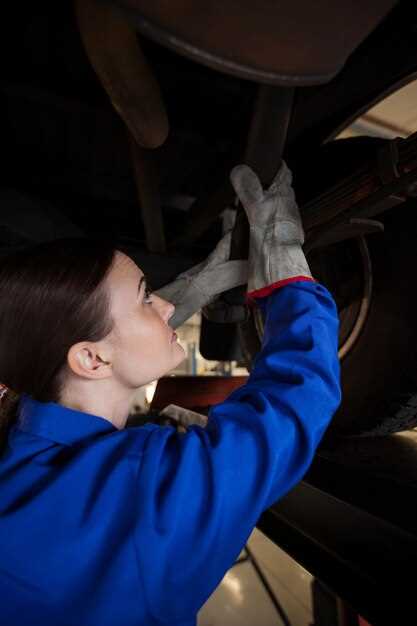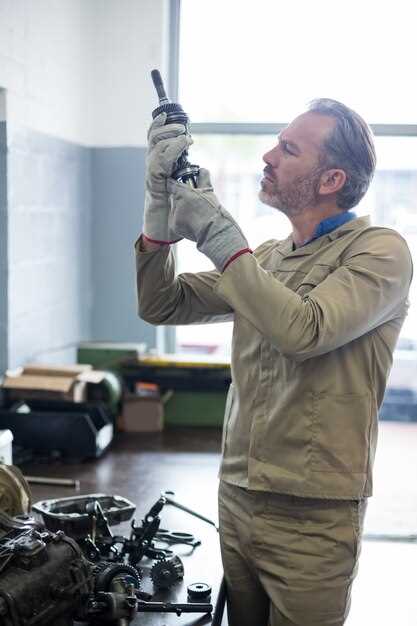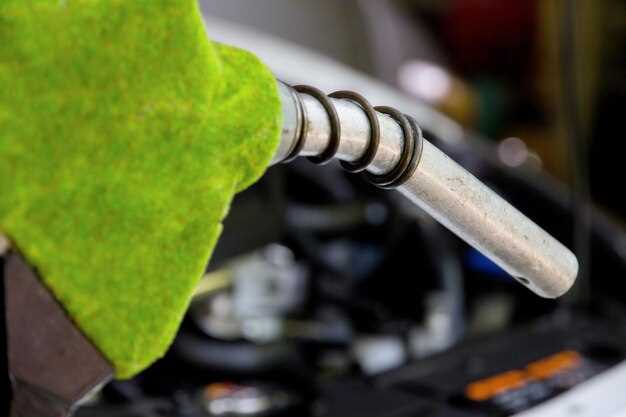
How to Clean an EGR Valve Properly
- Arthur Rodriquez
- 0
- Posted on

The EGR (Exhaust Gas Recirculation) valve plays a crucial role in reducing emissions and improving engine efficiency. Over time, this component can become clogged with carbon deposits and other contaminants, leading to performance issues. Therefore, cleaning the EGR valve is essential to maintain optimal engine function and adhere to environmental regulations.
Before diving into the cleaning process, it is vital to gather the necessary tools and safety equipment. Proper preparation ensures that you can complete the task efficiently and with minimal risk. This article is designed to guide you through the proper steps for safely cleaning your EGR valve, enabling you to restore its functionality without causing damage to your vehicle.
By following the outlined procedures, you not only extend the lifespan of your EGR valve but also enhance the overall performance of your engine. Regular maintenance of this critical component can lead to improved fuel efficiency and emissions control, making it a worthwhile endeavor for any car owner.
Gathering Necessary Tools and Materials for EGR Valve Cleaning
Before you start the cleaning process of your EGR valve, it is essential to gather all the necessary tools and materials. Having the right equipment will not only make the job easier but also ensure that the valve is cleaned effectively without causing any damage.
First, you should prepare a set of basic hand tools. A ratchet set, including various sizes of sockets, will be crucial for removing the EGR valve from its mounting. A quality wrench set may also come in handy for tight spaces.
You will need cleaning agents that are specifically designed for EGR valves. Look for a product that is safe for use on aluminum and does not leave harmful residues. An effective brake cleaner or a dedicated EGR valve cleaning spray can help dissolve carbon buildup.
A soft brush or soft cloth is recommended to reach all crevices and ensure thorough cleaning without scratching the valve’s surface. For more stubborn deposits, a scraper made of plastic can be useful, as it minimizes the risk of damaging the metal.
Lastly, ensure you have a container to collect any residual fluid or debris, as well as gloves and safety goggles to protect yourself during the cleaning process. By gathering these tools and materials beforehand, you’ll be well-prepared to clean your EGR valve safely and effectively.
Step-by-Step Guide to Removing and Cleaning the EGR Valve

Cleaning your EGR valve helps maintain optimal engine performance. Follow these steps carefully to ensure a safe and effective process.
Step 1: Gather Necessary Tools
Before starting, collect all required tools: a socket set, screwdrivers, a cleaning brush, and EGR cleaner. Ensure you have protective gloves and safety glasses on hand.
Step 2: Disconnect the Battery
To prevent any electrical issues, disconnect the negative terminal of the battery. This step is crucial before working on engine components.
Step 3: Locate the EGR Valve
The EGR valve is typically found on the intake manifold or near the engine. Consult your vehicle’s service manual for the exact location.
Step 4: Remove the EGR Valve
Using the socket set, carefully remove the bolts securing the valve to the engine. Once the bolts are removed, gently detach the valve from its position, taking care not to damage any surrounding components.
Step 5: Inspect the EGR Valve
Before cleaning, examine the valve for any obvious damage or excessive carbon buildup. If it shows significant wear, consider replacing it instead of cleaning.
Step 6: Clean the EGR Valve
Apply the EGR cleaner to the valve and use the cleaning brush to scrub away carbon deposits thoroughly. Ensure that all passages are clear and that the valve operates smoothly. Rinse with a cloth or additional cleaner as needed.
Step 7: Reinstall the EGR Valve
Position the cleaned EGR valve back onto the intake manifold. Secure it with the bolts you removed earlier, ensuring a tight fit to prevent any leaks.
Step 8: Reconnect the Battery
Reconnect the negative terminal of the battery. This step completes the installation process.
Step 9: Start the Engine
Turn on the ignition and let the engine idle for a few moments. Check for any unusual noises or warning lights on the dashboard to ensure everything is functioning correctly.
By following these steps carefully, you can successfully remove and clean the EGR valve, which is essential for maintaining your vehicle’s performance.
Reinstallation Tips and Post-Cleaning Maintenance for EGR Valve

After cleaning your EGR valve, careful reinstallation is crucial to ensure optimal performance. Begin by examining the valve for any signs of wear or damage; replace it if necessary. Use a new gasket to prevent exhaust leaks, as a damaged or old gasket can lead to poor engine performance.
Align the EGR valve properly with the intake manifold and secure it using the appropriate bolts. Tighten these bolts to the manufacturer’s specifications to avoid causing any stress on the valve or manifold. It’s important to remember that overtightening can warp the components and lead to further issues.
Once reinstalled, reconnect all hoses and electrical connectors, ensuring they are secure and in good condition. Double-check that all connections are snug and free from obstructions to allow for proper airflow.
Post-cleaning maintenance of the EGR valve includes regular inspections. Schedule checks every few thousand miles to ensure that it remains clean and functional. Look for any signs of carbon build-up and address any issues immediately. Additionally, consider using high-quality fuel, as it can reduce deposits in the EGR system and improve overall efficiency.
Keep in mind that the vehicle’s overall health can affect the EGR valve’s lifespan. Maintain regular engine checks and service intervals to prevent any unforeseen complications related to exhaust recirculation.